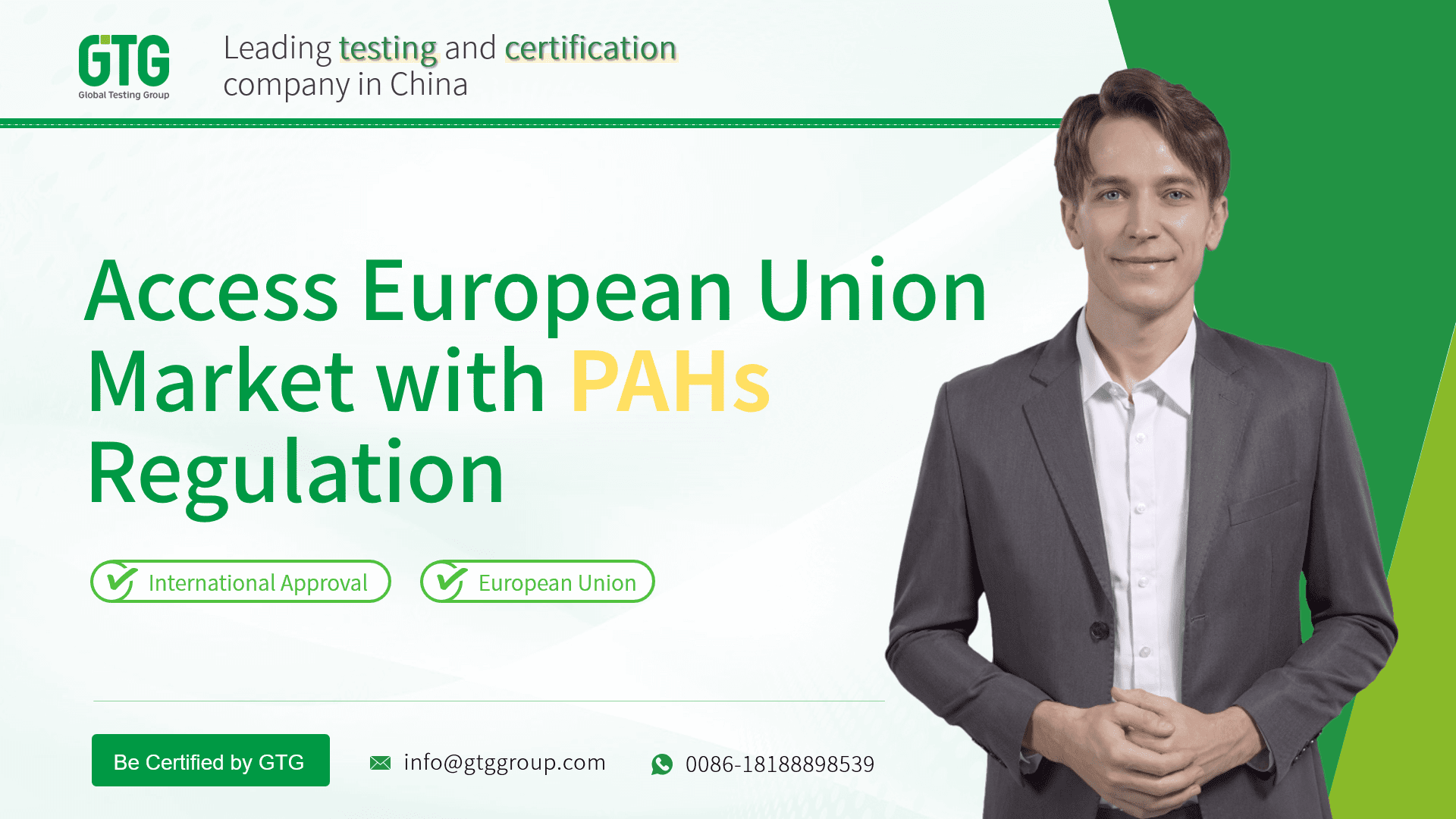
GTG provides professional, efficient and reliable PAHs testing & analysis service.
Learn more about how we can help →
Polycyclic Aromatic Hydrocarbons (PAHs) are a group of organic compounds, which are composed of two or more fused benzene rings. They are formed during incomplete combustion of organic materials, such as coal, oil, gas, wood, and tobacco. PAHs can be found in various sources, such as fossil fuels, coal tar, and crude oil. PAHs can also be produced by natural processes, such as volcanic activity and forest fires. These compounds have been identified as carcinogenic, mutagenic, and toxic to aquatic life. The European Union (EU) has taken steps to regulate the use of PAHs in various products through the Registration, Evaluation, Authorisation, and Restriction of Chemicals (REACH) regulation.
In the United States, the Environmental Protection Agency (EPA) has established regulatory standards for PAHs in various environmental media, including air, water, and soil. The EPA has also developed guidelines for assessing the risks associated with exposure to PAHs. The European Union has established similar regulations through the REACH (Registration, Evaluation, Authorization, and Restriction of Chemicals) program.
The EU REACH regulation
Compliance with the REACH regulation is essential for companies that produce or import products containing PAHs. The REACH regulation is a comprehensive regulatory framework designed to ensure the safe use of chemicals in the EU. Under this regulation, companies are required to register chemicals they produce or import into the EU. The regulation also requires companies to provide information on the safety of their chemicals and to take measures to manage any identified risks. Failure to comply with the regulation can result in legal and financial consequences.
PAHs and REACH
PAHs are included in the REACH regulation due to their toxic and carcinogenic properties. The regulation restricts the use of PAHs in various products, such as tires, clothing, and toys, to protect human health and the environment. Manufacturers, importers, and downstream users of products containing PAHs must comply with the REACH requirements for these compounds and have the necessary documentation to prove compliance.
How do PAHs enter the environment?
PAHs can enter the environment through various pathways, such as air emissions from industrial processes, motor vehicles, and burning of fossil fuels; discharge of wastewater from industrial and municipal sources; deposition from atmospheric fallout; and leaching from contaminated soils and sediments.
What are the health effects of PAHs?
PAHs are known to be carcinogenic and mutagenic, and exposure to them can lead to various health problems, such as cancer, respiratory diseases, reproductive disorders, and developmental abnormalities. PAHs can also affect the immune system and cause skin irritation.
What are the regulatory limits for PAHs?
Regulatory limits for PAHs vary depending on the environmental media and the country or region. For example, the European Union has set limits for PAHs in food, water, and air, while the United States has set limits for PAHs in drinking water and soil. Regulatory limits are based on the potential risk to human health and the environment.
PAHs monitoring & exposure assessment
PAHs monitoring is an essential part of ensuring compliance with the REACH regulation. Monitoring can be done in various settings, such as industrial sites, urban areas, workplaces, homes and natural environments, to determine the levels of PAHs. This information can be used to identify potential sources of PAHs and to evaluate the effectiveness of measures taken to manage any identified risks.
How are PAHs tested and analyzed?
There are several analytical techniques available for PAHs analysis, including gas chromatography-mass spectrometry (GC-MS), liquid chromatography-mass spectrometry (LC-MS), and high-performance liquid chromatography (HPLC). These techniques can provide accurate and reliable results for PAHs analysis, and can be used to determine compliance with the REACH requirements.
How can GTG assist you with PAHs testing & analysis?
When seeking a certification company for PAH testing, it is important to choose a reputable and accredited organization. Look for certifications or accreditations from recognized bodies, and consider their expertise and experience in PAH analysis.
GTG plays a crucial role in testing Polycyclic Aromatic Hydrocarbons (PAHs) by providing independent and reliable analysis of various products and materials. Here’s how GTG can assist in PAH testing:
(1) Expertise and accreditation
GTG have specialized laboratories equipped with advanced analytical instruments and experienced scientists who are knowledgeable in PAH testing methods. We hold accreditations from relevant regulatory bodies or international standards organizations, ensuring the accuracy and reliability of their testing processes.
(2) Sample collection and analysis
GTG can guide businesses or individuals on proper sample collection techniques to ensure representative and reliable results. We can provide sampling kits or advice on how to collect samples for different types of materials, such as soil, water, air, or consumer products. Once samples are collected, We will perform the necessary analyses using validated methods and equipment.
(3) Compliance with regulations and standards
PAH testing is often required to meet regulatory requirements or comply with industry standards. GTG can help businesses navigate these regulations and standards, ensuring that their products or materials meet the necessary PAH limits. We can provide guidance on the specific regulations applicable to different regions or industries.
(4) Reporting and certification
After conducting the PAH analysis, GTG will provide a detailed report of the test results. This report will outline the levels of PAHs detected in the samples and compare them against the applicable limits or guidelines. If the samples meet the required standards, GTG can issue a certificate or seal of approval, demonstrating compliance with PAH regulations.
(5) Continuous monitoring and support
PAH testing may not be a one-time process, especially for industries or businesses that deal with materials or products that are prone to PAH contamination. GTG can offer ongoing monitoring services to ensure PAH levels remain within acceptable limits. We can provide guidance on implementing preventive measures and best practices to minimize PAH contamination.
Contact GTG today! Let us help to ensure that your products are free of PAHs and increase consumer confidence, regulatory compliance, and get faster global market access!

